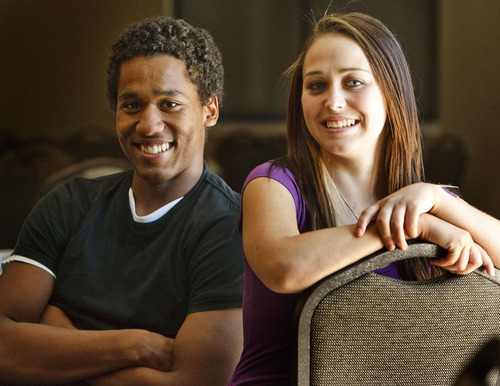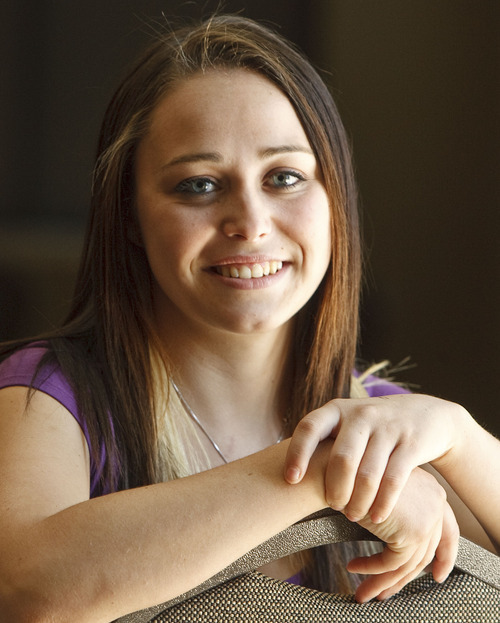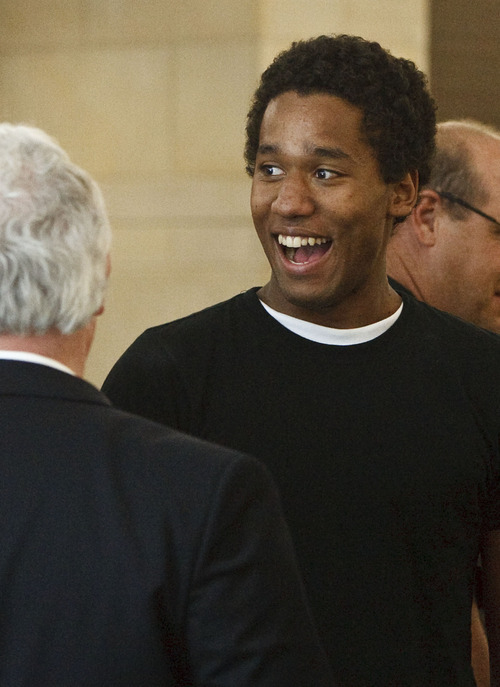This is an archived article that was published on sltrib.com in 2012, and information in the article may be outdated. It is provided only for personal research purposes and may not be reprinted.
For Courtney Bown, life after foster care looks overwhelming.
"I'm really nervous," she said. "I'm not ready for the world."
Taken out of an abusive home at about 10, she lived with two different foster families and credits the system with steering her away from drugs and even helping her mother and father become better parents. But foster care ended last month for Bown when she turned 18.
"I wish people were there just to guide me through," she said. There are hundreds of kids who age like her every year in Utah, said Jennifer Larson, adolescent services program administrator for the Division of Children and Family Services. They enter a harsher world than most young people.
"They don't have the option of saying, 'Hey Dad, can you transfer money into my account?'" she said. "They tend to become homeless, pregnant, they don't have healthy relationships. Basically, they leave the system with nothing."
Enter the 10th Annual Utah Youth Summit. For two days, about 200 foster kids age 14 and older gathered at the University of Utah to learn how to live on their own, including how to set goals and reach them, resolve conflicts responsibly and find and keep housing.
Many of the teenagers have led lives in flux, bouncing from place to place with unstable families and moving frequently again after they enter the system, leaving them without a network of trusted people to help them through rough spots.
"The number-one indicator of whether youth will be successful is if they have permanent relationships," Larson said. Helping create and cement those relationships, she said, is perhaps the most important goal of the summit, which started Wednesday and ended Thursday with foster kids telling the group what they thought about the system.
They asked for privacy from new foster parents who might go through journals or Facebook accounts, changes to agency rules that require a background check from every guest if a foster child wants to go to a sleepover, opportunities to earn money for college and cooking lessons.
"Just being able to have their voices heard, that's huge," Larson said. In the audience were DCFS top brass, as well as people who found success after foster care and teenage homelessness: former Washington professional baseball player Dashawn Patrick and Franklin Covey executive Sam Bracken.
It's the kind of story 18-year-old Reece Garcia wants to emulate.
"I love my education," he said. "School was a safe haven."
Determined to get out of his mother's house at age 10, Garcia fought with her until he was placed with the state. He lived in different foster and respite homes before he aged out in January with a high school diploma. He's now working at a costume shop and, despite a rough first semester, plans to earn his college degree.
Meanwhile, 18-year-old Chabrise Reay is a certified nursing assistant and wants to be an emergency room doctor.
"I'm nervous to be on my own," she said, "but I'm ready."
Twitter: @lwhitehurst







